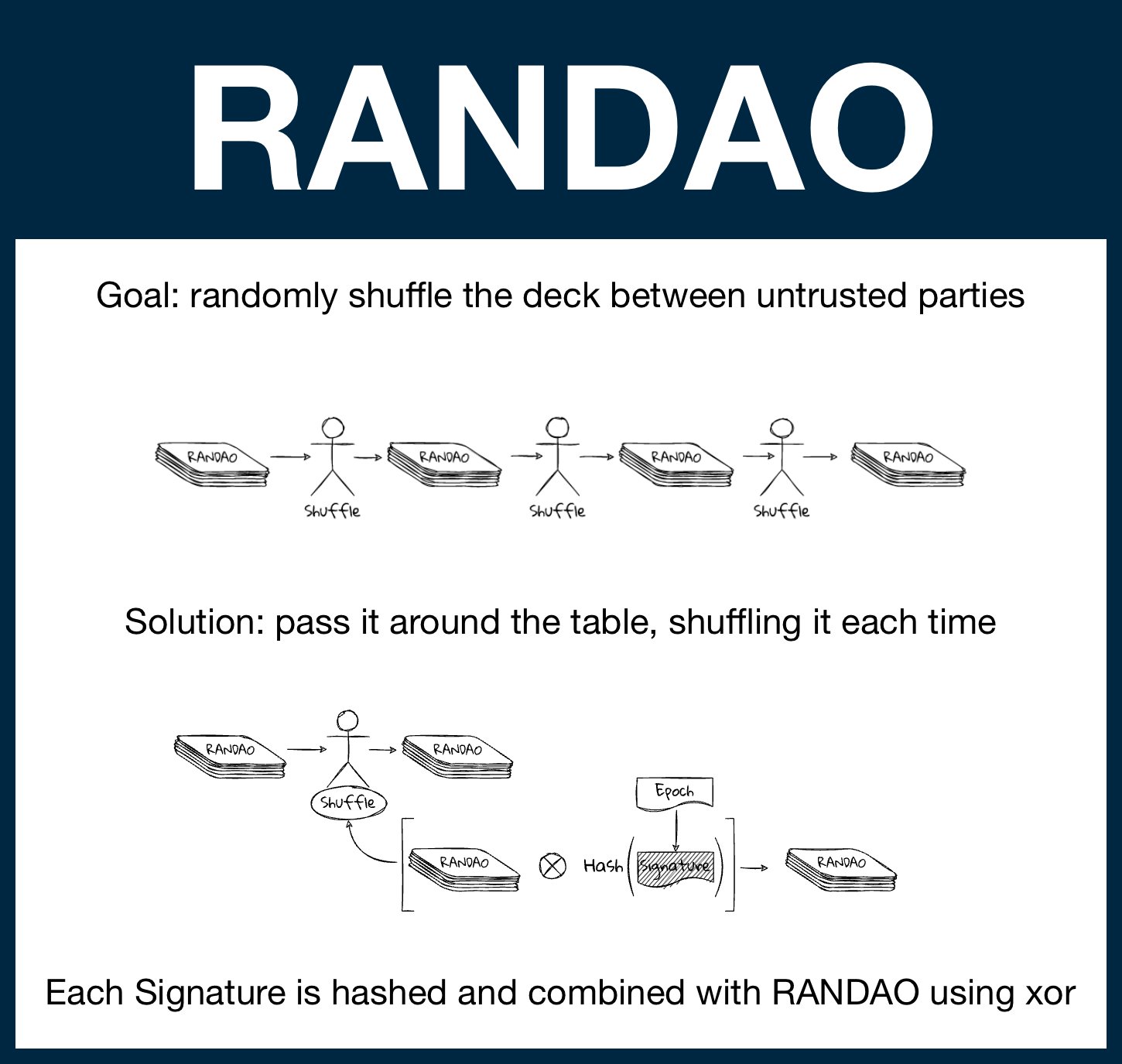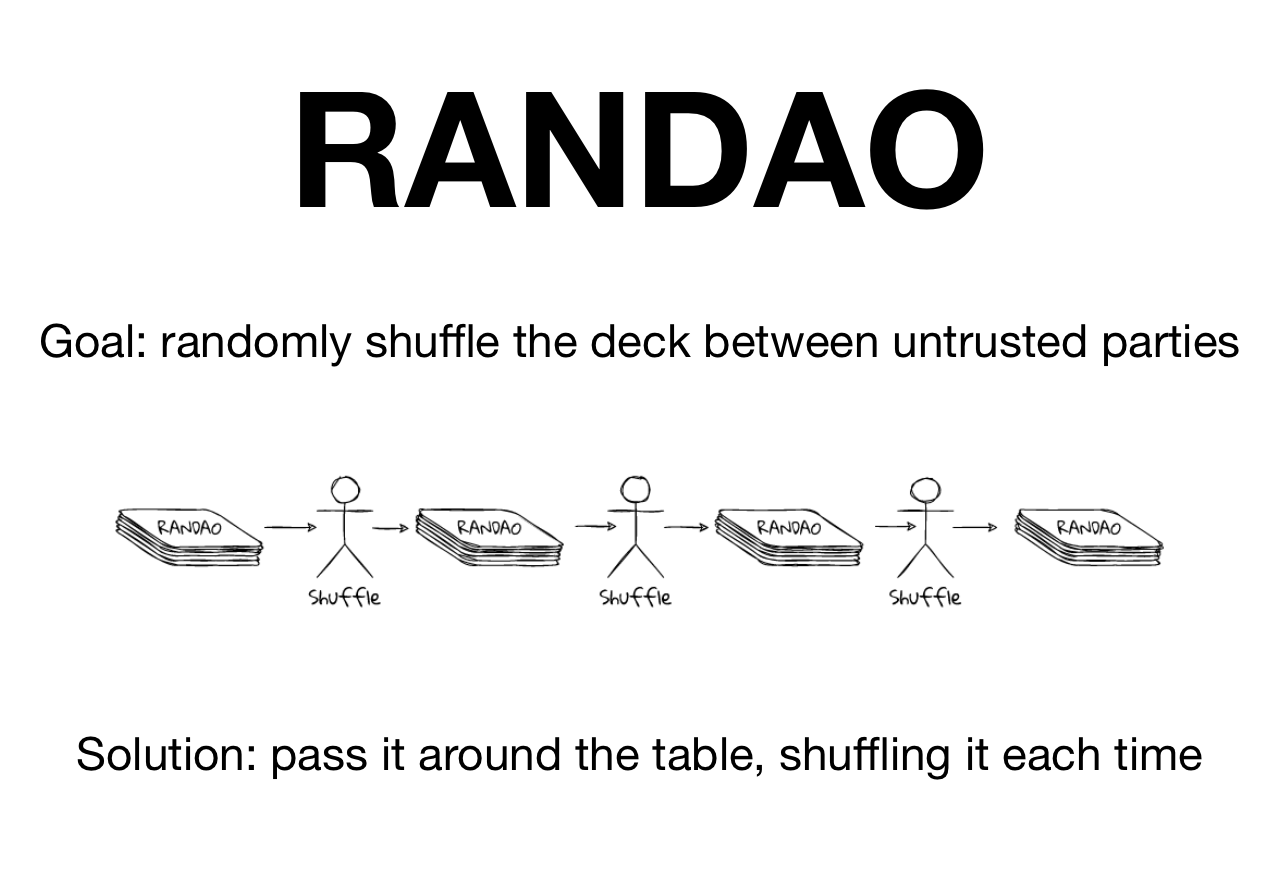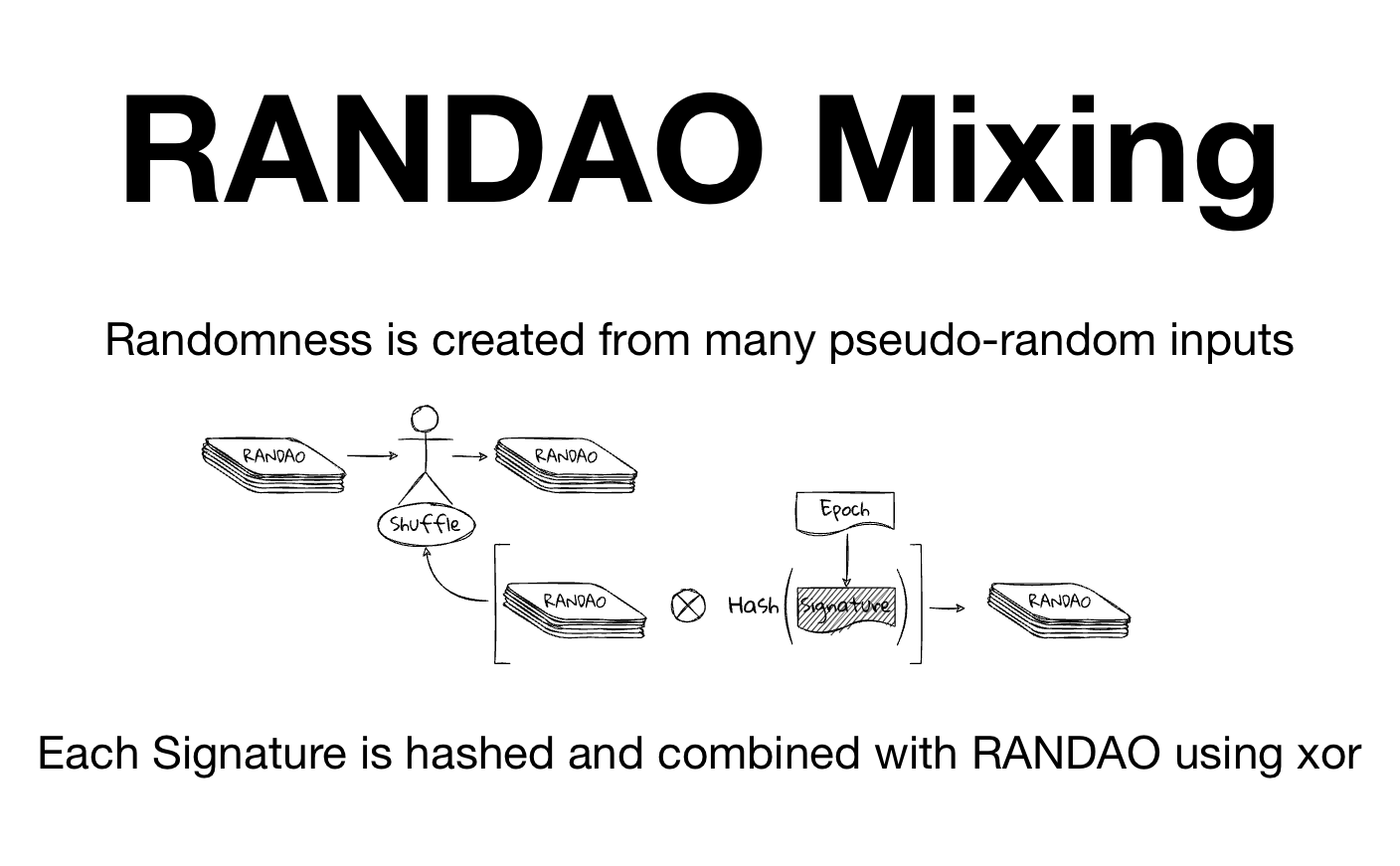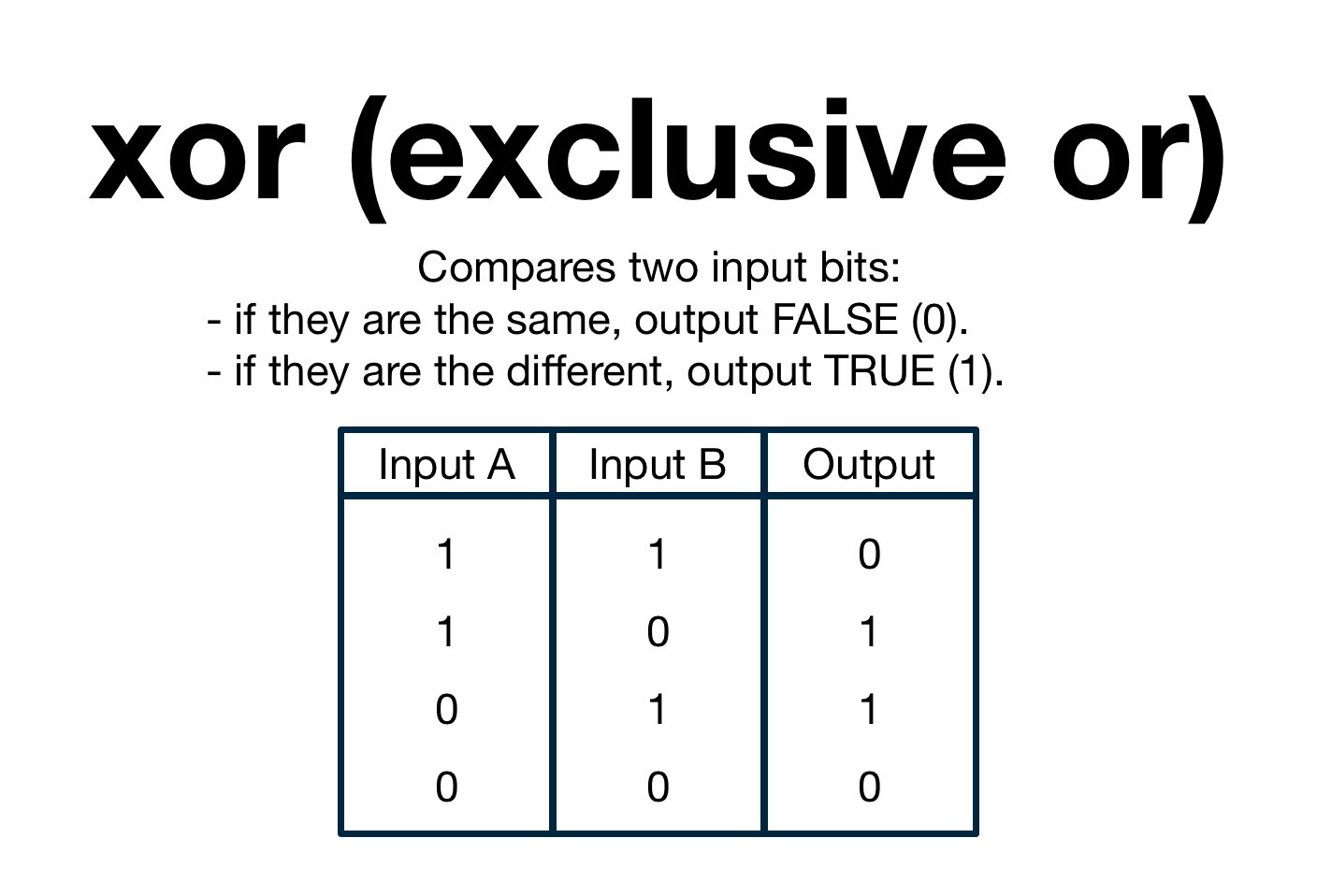
¶ RANDAO
¶ Prerequisites
¶ BLS Digital Signatures
BLS Digital Signatures - A method of generating digital signatures; digital signatures appear as random data (there is no way to discover anything about the signer with just the signature.
¶ Randomness
Randomness is a quality of unpredictability, an inability to foresee what comes next.
It is not a binary quality; some things can be more random than others. Weather seems random, but we can (try to) predict it; the lottery is (hopefully) completely random.
In general, computers are supposed to execute in expected ways. The same input should generate the same output, every single time.
A computer that introduces randomness into execution would be practically unusable.
And yet, there are clearly important applications that depend on credible randomness (for example, generating private keys).
So where does this randomness come from?
¶ Unpredictable Input
Computers (generally) rely on the concept of reasonably unpredictable external input.
For example, a normal computer might use its users mouse movements as a basis of generating a random number. Mouse movements are very specific; it is very unlikely that two people will move their mice in the same way over a long enough period of time - intentionally or not.
¶ Isolated World Computer
Ethereum is the World Computer, a globally shared computing platform that exists between a network of 1,000s of computers, each running a local version of the Ethereum Virtual Machine (EVM).
Fortunately or not, the EVM is isolated from the outside world.
One way to solve this issue is with oracles, a type of service that bridge information between the World Computer and the internet.
However, oracles are not native to Ethereum.
Relying on an oracle has external trust assumptions and can be very gas intensive (expensive).
Instead, Ethereum relies on a RANDAO mechanism to create protocol-level randomness.
¶ RANDAO
The RANDAO is a value maintained by the beacon chain; with each block, the proposer mixes in their own random contribution to the existing RANDAO value.
¶ Shuffling Cards

Imagine you have a deck of cards you want randomly shuffled.
One way to achieve credible randomness is to pass the deck around the table, with each person shuffling it in turn.
Even if one person tries to cheat, the cumulative result is still very random.
¶ RANDAO Reveal
For Ethereum, the chain maintains a RANDAO value.
When a block proposer creates a new block, it adds in its contribution. You can see the contribution in the block (randao_reveal).
Each contribution needs to satisfy 2 properties: it should be unpredictable yet verifiable
¶ Contributing Randomness
¶ Hash Onion
Early ideas for the RANDAO contribution had each validator create a "hash onion," a data structure built from hashing a random number repeatedly. However, this method is clunky and begins to fall apart with some edge cases.
A natural alternative became available when Ethereum changed its digital signature scheme to be built around BLS signatures.
¶ BLS Signatures
At the data level, an aggregate BLS key is identical to a single BLS key; they share the same size and use the same verification algorithm.
This property is extremely important for the consensus process, but it is particularly useful as a RANDAO function.
With BLS signatures, every validator already has a closely guarded random number - their private key - achieving unpredictability. Furthermore, every node can verify the RANDAO contribution just by verifying the BLS signature - achieving verifiability.
Specifically, the RANDAO contribution is its normal BLS signature with the the epoch number (think block number) as the message.
This contribution is both stamped into the block (randao_reveal) and mixed into the EVMs RANDAO value.
¶ Combining Contributions

In a RANDAO scheme, mixing is the process of combining the contributions; in our card metaphor mixing is shuffling the cards.
For Ethereum, we first hash the BLS signature and then we mix this has with the previous RANDAO value using an operation called xor.
¶ xor

¶ Sufficient Randomness
Each time a new block is created, RANDAO is updated with just a little more randomness. And so, through the trustless contribution of every proposing validator, we generate a sufficiently random value.
This value is now available to both Ethereum consensus and the EVM.
Practically speaking, if a dApp relies on true randomness, they are probably going to use a Verifiable Random Function (VRF) form an oracle like Chainlink. The true purpose of RANDAO is to provide randomness for consensus.
A protocol that is fully predictable is very vulnerable. An attacker could:
- DDoS a proposer or a committee to attempt to halt the chain
- bribe an upcoming proposer
- attempt to register advantageous validator number to try to gain control over a committee - etc
Ethereum's RANDAO isn't perfect, but it is very strong. Just think "RANDAO is random enough for Proof of Stake."
¶ Resources
Source Material - Twitter Link
Source Material - PDF